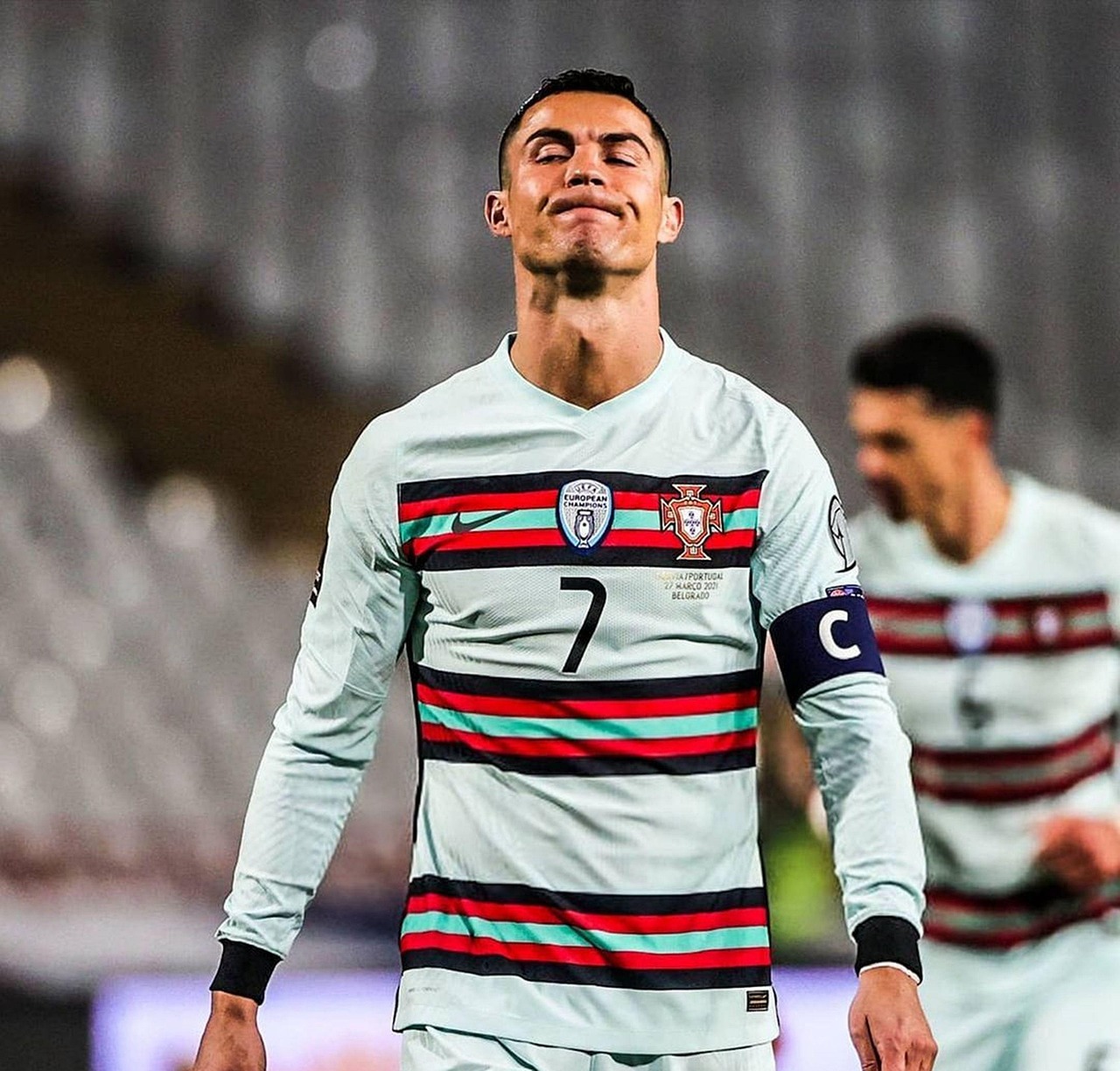While most elite footballers obsess over protein shakes and specialized supplements, Erling Haaland starts his day with something that would make most nutritionists cringe: raw heart and liver. This isn’t some medieval ritual—it’s part of a meticulously crafted approach that has transformed a promising Norwegian teenager into the most feared striker on the planet, redefining what it means to be physically dominant in modern football.
In just five years, Erling Haaland has evolved from a relatively unknown prospect in Norway’s second division to a goal-scoring phenomenon who breaks records with the casual ease of a player scoring in Sunday league. His numbers read like a video game glitch: 36 goals in 35 Premier League appearances during his debut season at Manchester City, 52 goals in 53 games across all competitions, and a Champions League treble that cemented his status among football’s elite. But behind these staggering statistics lies a more remarkable story—the physical transformation of a lanky 19-year-old into a 6’4″ force of nature who combines the acceleration of a sprinter with the power of a heavyweight boxer.
What makes Haaland truly different isn’t just his ability to find the back of the net, but the unconventional methods that fuel his success. While his peers follow traditional sports science protocols, Haaland has carved his own path through a combination of ancestral nutrition, organ-focused supplementation, and training methods that prioritize functional power over aesthetic muscle building. His approach challenges conventional wisdom about athletic performance, drawing from everything from his Scandinavian heritage to cutting-edge recovery science.
This isn’t just another story about natural talent meeting hard work. Haaland’s rise represents a fundamental shift in how we think about athletic optimization—one that suggests the future of elite performance might lie not in the latest supplement trends, but in rediscovering forgotten principles of human health and vitality. His success offers a blueprint that extends far beyond football, providing insights into sustainable peak performance that could revolutionize how athletes at every level approach their craft.
The Foundation: Genetic Gifts and Early Development
Understanding Haaland’s current dominance requires examining the foundation upon which his extraordinary career was built. Standing at 6’4″ with a frame that combines the lean muscle mass of a distance runner with the explosive power of a sprinter, Haaland possesses a rare genetic combination that would make him exceptional in almost any sport. His natural stride length allows him to cover ground with deceptive ease, while his low body fat percentage and long limbs create the perfect biomechanical setup for both speed and aerial dominance.
However, genetics alone don’t explain his development. Growing up in Bryne, Norway, Haaland was immersed in an environment where athletic excellence was the norm rather than the exception. His father, Alf-Inge Haaland, was a Premier League defender who understood the demands of elite football, while his mother, Gry Marita Braut, was a national-level heptathlete. This athletic pedigree provided more than just good genes—it offered early exposure to professional training methodologies and, crucially, nutritional principles that differed markedly from standard youth football approaches.
From an early age, the Haaland household emphasized whole foods over processed alternatives, with family meals featuring locally sourced meats, vegetables, and traditional Scandinavian ingredients. This early nutritional foundation, combined with Norway’s youth development system that prioritizes technical skill and physical literacy over early specialization, created the perfect environment for Haaland’s holistic development. Unlike many elite prospects who burn out from intensive training regimens, Haaland’s early years were characterized by variety, balance, and a focus on long-term athletic development rather than short-term results.
Nutritional Philosophy: Beyond Standard Sports Nutrition
The Heart-First Approach
Perhaps no aspect of Haaland’s regimen has generated more curiosity—and skepticism—than his daily consumption of heart and liver supplements. While most athletes focus on building muscle mass through conventional protein sources, Haaland operates from a fundamentally different philosophy: optimal athletic performance begins with optimal organ health. His morning routine includes consuming heart and liver supplements, based on the principle that these organs are among the most nutrient-dense foods available and directly support cardiovascular and metabolic function.
This approach isn’t as unconventional as it might seem from a historical perspective. Traditional cultures have long valued organ meats for their concentrated nutrients, including CoQ10, B-vitamins, iron, and other compounds that directly support energy production and oxygen transport. For an athlete whose performance depends on explosive bursts of speed and sustained high-intensity efforts, optimizing cardiovascular and metabolic function through organ supplementation represents a logical, if uncommon, strategy.
The connection between organ health and athletic performance becomes clearer when considering Haaland’s on-field demands. His ability to repeatedly sprint at maximum speed throughout a 90-minute match, maintain power output during crucial moments, and recover quickly between high-intensity efforts all depend on efficient oxygen transport, energy production, and waste removal—functions directly supported by heart and liver health. While other players rely on external stimulants or synthetic supplements to maintain performance, Haaland’s approach targets the underlying biological systems that naturally support sustained excellence.
Whole Foods Over Supplements
In an era where elite athletes often consume dozens of supplements, Haaland’s approach is refreshingly simple: prioritize real food over manufactured alternatives. His kitchen resembles that of a health-conscious family more than a professional athlete’s laboratory. Rather than protein powders, he obtains his protein from high-quality meats, fish, and eggs. Instead of synthetic vitamins, he sources nutrients from fruits, vegetables, and traditional foods that humans have consumed for millennia.
This whole foods philosophy extends beyond simple ingredient selection to encompass food quality and sourcing. Haaland prioritizes grass-fed meats, wild-caught fish, and organic produce when possible, operating under the principle that nutrient density and bioavailability matter more than pure macronutrient numbers. Where many athletes calculate precise protein, carbohydrate, and fat ratios, Haaland focuses on consuming foods in their most natural state, trusting that his body can extract and utilize nutrients more efficiently from whole food sources.
The practical implications of this approach are significant. By avoiding heavily processed supplements and protein powders, Haaland reduces his exposure to artificial additives, preservatives, and compounds that might interfere with natural digestion and absorption. His digestive system operates more efficiently, reducing inflammation and supporting better nutrient utilization. This foundation of optimal digestion and minimal processed food intake creates the ideal internal environment for peak athletic performance.
Meal Timing and Structure
Haaland’s approach to meal timing reflects his understanding that when you eat can be as important as what you eat. His daily structure revolves around supporting his body’s natural circadian rhythms while optimizing performance and recovery windows. Training sessions are preceded by easily digestible carbohydrates and moderate protein, providing readily available energy without the digestive burden of heavy meals.
Post-training nutrition focuses on rapid recovery through a combination of high-quality proteins and targeted carbohydrates, but always in whole food form rather than synthetic alternatives. His evening meals emphasize foods that support sleep quality and overnight recovery, including magnesium-rich vegetables and tryptophan-containing proteins that naturally promote rest and regeneration.
Hydration represents another area where Haaland’s approach differs from conventional wisdom. Rather than consuming large quantities of plain water or commercial sports drinks, he emphasizes maintaining optimal electrolyte balance through natural sources. Sea salt, mineral-rich waters, and foods with high potassium content form the foundation of his hydration strategy, supporting cellular function and preventing the dilutional effects that can occur with excessive plain water consumption.
Training Methodology: Power Meets Precision
Strength Training Specifics
Haaland’s approach to strength training reflects a sophisticated understanding of how gym work translates to football performance. Rather than pursuing maximum muscle mass or impressive lifting numbers, his training focuses on developing the specific types of strength and power that directly impact his ability to accelerate, jump, and change direction on the pitch. His workouts emphasize compound movements that mirror the multi-joint patterns used in football, with particular attention to developing force production in the shortest possible time frames.
Explosive movements like Olympic lifting variations, plyometric exercises, and speed-strength combinations form the core of his strength training philosophy. These exercises develop the rapid force production capabilities that allow him to accelerate past defenders or leap above them for headers. Unlike bodybuilding-style training that might add non-functional muscle mass, every exercise in Haaland’s program serves a specific purpose in enhancing his football performance.
Recovery between training sessions receives as much attention as the sessions themselves. Haaland’s strength training follows periodized cycles that align with his match schedule, ensuring he arrives at games with optimal power output rather than residual fatigue from training. This requires careful monitoring of training loads, sleep quality, and subjective feelings of readiness, creating a feedback loop that allows for real-time adjustments to maintain peak performance.
Speed and Agility Development
The development of Haaland’s legendary pace involves more than simply running fast in straight lines. His speed training encompasses acceleration mechanics, top-speed maintenance, and the ability to change direction efficiently—all critical components for a striker who must create separation from defenders in tight spaces. Technical sprint coaching focuses on optimizing his running mechanics to maximize efficiency and reduce injury risk at high speeds.
Agility work specifically targets the movement patterns most relevant to his position: quick cuts to lose markers, rapid changes of direction in the penalty area, and the ability to accelerate from static positions. These drills are designed to improve not just physical capability but also the neural pathways that allow for instantaneous decision-making and movement execution during matches.
Plyometric training serves as the bridge between pure strength and speed development, focusing on the elastic properties of muscles and tendons that allow for explosive movements. Jump training, reactive drills, and multi-directional plyometrics develop the spring-like qualities that enable Haaland to leap for headers or explode into sprints with minimal preparation time.
Recovery and Regeneration
Haaland’s approach to recovery represents perhaps the most sophisticated aspect of his training methodology. Understanding that adaptation occurs during rest periods rather than training sessions, he places enormous emphasis on optimizing sleep quality, managing stress, and supporting his body’s natural recovery processes. His sleep environment is carefully controlled for temperature, light exposure, and comfort, recognizing that sleep quality directly impacts hormone production, tissue repair, and cognitive function.
Active recovery protocols include low-intensity movement, mobility work, and activities that promote blood flow without creating additional training stress. These sessions serve multiple purposes: maintaining movement quality, supporting lymphatic drainage, and providing mental breaks from high-intensity training and competition demands.
Mental recovery receives equal attention to physical regeneration. Haaland employs various stress management techniques, from meditation and breathing exercises to leisure activities that provide psychological relief from the pressures of elite performance. This holistic approach to recovery ensures that he arrives at each training session and match with both physical and mental resources fully replenished.
The Mental Edge: Mindset and Preparation
The mental aspects of Haaland’s preparation reveal a maturity that belies his age and experience level. His pre-match routines are carefully structured to optimize arousal levels, focus attention on relevant cues, and build confidence through mental rehearsal. These routines remain consistent regardless of opponent or venue, providing psychological stability in the face of varying external pressures.
Visualization techniques form a cornerstone of his mental preparation, involving detailed mental rehearsal of various game scenarios, successful outcomes, and appropriate responses to different situations. This mental practice serves as a form of neurological training, strengthening the neural pathways associated with successful performance and building familiarity with high-pressure situations before they occur in reality.
Perhaps most importantly, Haaland has developed sophisticated strategies for managing the enormous expectations and media attention that accompany his status as one of football’s brightest stars. Rather than allowing external pressure to create anxiety or self-doubt, he has learned to channel this energy into motivation and focus. This psychological resilience, combined with his physical gifts and systematic approach to preparation, creates a complete performer capable of delivering excellence consistently at the highest level.
What Sets Him Apart from Other Elite Strikers
When compared to other world-class forwards, several unique elements of Haaland’s approach become apparent. While players like Benzema, Lewandowski, and Kane have achieved similar levels of success through different methods, Haaland’s combination of unconventional nutrition, systematic recovery protocols, and long-term thinking sets him apart from his contemporaries. His willingness to prioritize organ health over conventional muscle-building approaches, for instance, represents a fundamental philosophical difference from most elite athletes.
The sustainability of his methods presents another distinguishing factor. While many elite performers rely on increasingly complex supplement regimens or training methods that become difficult to maintain over time, Haaland’s approach appears designed for longevity. His emphasis on whole foods, natural recovery methods, and training that supports rather than depletes his body suggests a career that could maintain excellence well into his thirties.
Most significantly, Haaland’s approach demonstrates a level of systematic thinking rarely seen in young athletes. Rather than chasing short-term gains or copying what others do, he has developed an integrated philosophy that addresses all aspects of performance. This holistic approach, combined with his natural gifts, creates a performance ceiling that may be higher than what we’ve seen from other players.
The Science Behind His Success
Modern sports science largely supports many of Haaland’s unconventional approaches, even if they differ from mainstream athletic practices. Research on circadian rhythms validates his attention to sleep optimization and meal timing. Studies on whole food nutrition support his preference for natural over synthetic nutrients. Even his organ supplementation aligns with emerging research on nutrient density and bioavailability.
However, some limitations and potential drawbacks exist. His approach requires significant time, resources, and knowledge that may not be accessible to all athletes. The emphasis on organ supplements, while potentially beneficial, lacks the extensive research base of more conventional approaches. Additionally, the highly individualized nature of his methods means they may not translate directly to other athletes with different genetics, preferences, or circumstances.
For amateur athletes, the key lessons from Haaland’s approach lie not in copying specific methods but in adopting his systematic thinking and long-term perspective. Prioritizing sleep, emphasizing whole foods, and focusing on sustainable training methods represent universally applicable principles that can benefit athletes at any level.
Conclusion
Haaland’s approach to athletic excellence offers a compelling alternative to the increasingly complex and supplement-dependent methods common in modern sport. His success demonstrates that peak performance can be achieved through principles that align with human biology rather than attempting to override it through artificial means. The combination of genetic gifts, systematic preparation, and unconventional wisdom has created not just a great player, but a new model for athletic development.
The applicability of his methods extends far beyond elite football. Youth athletes can benefit from his emphasis on whole foods and sustainable training methods. Adult recreational players can adopt his systematic approach to recovery and preparation. Even non-athletes can learn from his integration of physical and mental preparation strategies.
Looking toward the future, Haaland’s success may herald a shift away from the arms race of increasingly complex supplementation and training methods toward a more sophisticated understanding of how to support the body’s natural capabilities. His career represents not just individual excellence, but a potential roadmap for the next generation of athletic development—one that prioritizes sustainability, systematic thinking, and respect for the fundamentals of human performance. As other athletes begin to adopt similar approaches, we may discover that the future of elite performance lies not in doing more, but in doing better.


